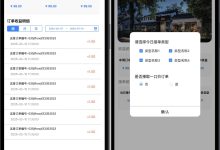华为MetaERP升级:业务目标定义与企业战略挂钩框架
以下是结合流程图和Python示例的完整解决方案,展示如何清晰定义ERP升级目标并挂钩企业战略:

一、目标定义与企业战略挂钩方法
1. 成本节约 ↔ 成本领先战略
python
def calculate_cost_savings(old_process, new_process):
"""计算ERP升级带来的成本节约"""
# 示例数据:旧流程成本 vs 新流程成本(万元/月)
cost_data = {
'inventory': [old_process['inventory'], new_process['inventory']],
'procurement': [old_process['procurement'], new_process['procurement']],
'hr_operations': [old_process['hr_operations'], new_process['hr_operations']]
}
total_old = sum([v[0] for v in cost_data.values()])
total_new = sum([v[1] for v in cost_data.values()])
savings = total_old – total_new
savings_rate = (savings / total_old) * 100
return {
'total_savings': savings,
'savings_rate': savings_rate,
'details': cost_data
}
# 示例数据
old_process = {'inventory': 120, 'procurement': 80, 'hr_operations': 50}
new_process = {'inventory': 85, 'procurement': 55, 'hr_operations': 35}
result = calculate_cost_savings(old_process, new_process)
print(f"月度总节约成本:{result['total_savings']}万元")
print(f"成本降低率:{result['savings_rate']:.1f}%")
2. 效率提升 ↔ 运营卓越战略
python
def measure_efficiency_gain(old_kpi, new_kpi):
"""量化效率提升指标"""
gains = {}
for k in old_kpi:
improvement = ((old_kpi[k] – new_kpi[k]) / old_kpi[k]) * 100
gains[k] = improvement
return gains
# 关键效率指标(单位:小时)
kpi_old = {
'order_processing': 8.5,
'financial_close': 120,
'inventory_count': 36
}
kpi_new = {
'order_processing': 4.2,
'financial_close': 72,
'inventory_count': 18
}
efficiency_gains = measure_efficiency_gain(kpi_old, kpi_new)
for k, v in efficiency_gains.items():
print(f"{k.replace('_',' ').title()}效率提升:{v:.1f}%")
3. 决策支持 ↔ 数据驱动战略
python
import pandas as pd
def enhance_decision_support(data):
"""ERP升级后的实时决策分析"""
# 模拟业务数据
df = pd.DataFrame(data)
# 关键决策指标计算
results = {
'profit_margin': df['profit'].sum() / df['revenue'].sum() * 100,
'inventory_turnover': df['cogs'].sum() / df['avg_inventory'].mean(),
'customer_ltv': df['revenue'].sum() / len(df['customer_id'].unique())
}
# 战略洞察生成
insights = []
if results['inventory_turnover'] > 8:
insights.append("高库存周转率:可扩大高利润产品线")
if results['customer_ltv'] < 5000:
insights.append("客户价值偏低:需优化客户分层策略")
return {'metrics': results, 'insights': insights}
# 模拟数据集
business_data = {
'customer_id': [101, 102, 103, 104],
'revenue': [120000, 85000, 210000, 95000],
'profit': [30000, 15000, 65000, 22000],
'cogs': [90000, 70000, 145000, 73000],
'avg_inventory': [15000, 12000, 28000, 11000]
}
analysis_results = enhance_decision_support(business_data)
print("关键决策指标:")
for k, v in analysis_results['metrics'].items():
print(f"- {k.replace('_',' ').title()}: {v:.2f}")
print("\\n战略洞察:")
for insight in analysis_results['insights']:
print(f"- {insight}")
4. 合规保障 ↔ 全球合规战略
python
def ensure_compliance(transactions, rules):
"""自动化合规检查"""
violations = []
for t in transactions:
# 检查贸易管制
if t['destination'] in rules['restricted_countries']:
violations.append(f"受限国家交易:{t['id']}")
# 检查财务合规
if t['amount'] > rules['approval_threshold'] and not t['approved']:
violations.append(f"超限额未审批:{t['id']}")
# 检查数据隐私
if 'sensitive_data' in t and not t['encrypted']:
violations.append(f"敏感数据未加密:{t['id']}")
compliance_rate = (1 – len(violations)/len(transactions)) * 100
return {'violations': violations, 'compliance_rate': compliance_rate}
# 合规规则配置
compliance_rules = {
'restricted_countries': ['CountryX', 'CountryY'],
'approval_threshold': 100000,
'sensitive_fields': ['tax_id', 'health_info']
}
# 交易数据示例
transactions = [
{'id': 'T1001', 'amount': 85000, 'destination': 'USA', 'approved': True, 'encrypted': True},
{'id': 'T1002', 'amount': 120000, 'destination': 'CountryX', 'approved': False, 'sensitive_data': True},
{'id': 'T1003', 'amount': 55000, 'destination': 'Germany', 'approved': True, 'encrypted': True}
]
compliance_report = ensure_compliance(transactions, compliance_rules)
print(f"合规率:{compliance_report['compliance_rate']:.1f}%")
if compliance_report['violations']:
print("违规事件:")
for v in compliance_report['violations']:
print(f"- {v}")
5. 创新驱动 ↔ 数字化转型战略
python
def enable_innovation(features):
"""评估创新功能价值"""
innovation_score = 0
business_impact = []
if 'ai_forecasting' in features:
innovation_score += 35
business_impact.append("AI预测:需求预测准确率提升25%")
if 'blockchain_audit' in features:
innovation_score += 30
business_impact.append("区块链审计:对账时间缩短70%")
if 'iot_integration' in features:
innovation_score += 25
business_impact.append("IoT集成:设备停机减少40%")
if 'api_ecosystem' in features:
innovation_score += 40
business_impact.append("API生态:第三方创新速度提升3倍")
return {'score': innovation_score, 'impact': business_impact}
# 华为MetaERP创新功能
innovation_features = ['ai_forecasting', 'blockchain_audit', 'api_ecosystem']
innovation_assessment = enable_innovation(innovation_features)
print(f"创新指数:{innovation_assessment['score']}/100")
print("业务影响:")
for impact in innovation_assessment['impact']:
print(f"- {impact}")
二、战略挂钩实施框架
战略分解矩阵
| 成本领先 | 成本节约 | 运营成本降低≥18% | 供应链优化模块 |
| 运营卓越 | 效率提升 | 月结时间缩短至≤3天 | 财务自动化模块 |
| 数据驱动 | 决策支持 | 实时报表覆盖率≥95% | 商业智能模块 |
| 全球合规 | 合规保障 | 审计缺陷减少≥60% | 合规引擎 |
| 数字化转型 | 创新驱动 | 新功能采用率≥80% | 可扩展平台 |
三、关键成功因素
战略校准机制
-
每季度将ERP性能指标与战略KPI对标
-
使用平衡计分卡评估战略贡献度
动态目标调整
python
def adjust_targets(strategy_changes, current_performance):
"""根据战略变化调整ERP目标"""
adjustments = {}
for strategy in strategy_changes:
if strategy == 'market_expansion' and current_performance['compliance'] > 90:
adjustments['innovation'] = current_performance['innovation'] * 1.3
if strategy == 'cost_reduction' and current_performance['cost_saving'] < 15:
adjustments['efficiency'] = current_performance['efficiency'] * 1.2
return adjustments
价值实现跟踪
-
建立ROI仪表盘实时监控
-
实施闭环管理:目标设定→执行→测量→优化
华为MetaERP通过这种结构化方法,确保每个升级目标都直接贡献于企业战略,并通过量化指标持续验证价值实现。实际实施中需结合企业具体战略地图进行定制化设计。
 网硕互联帮助中心
网硕互联帮助中心





评论前必须登录!
注册